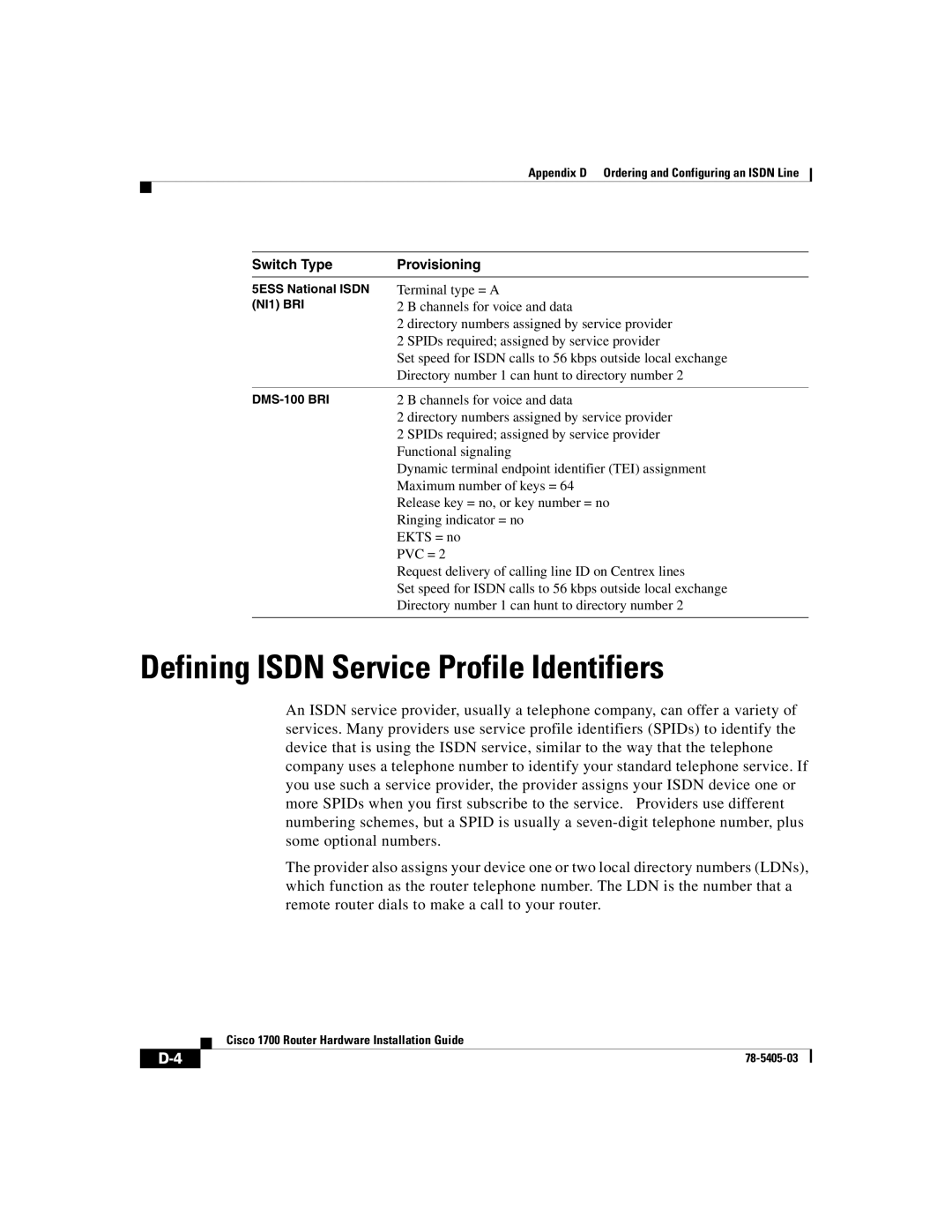
Appendix D Ordering and Configuring an ISDN Line
Switch Type | Provisioning |
5ESS National ISDN | Terminal type = A |
(NI1) BRI | 2 B channels for voice and data |
| 2 directory numbers assigned by service provider |
| 2 SPIDs required; assigned by service provider |
| Set speed for ISDN calls to 56 kbps outside local exchange |
| Directory number 1 can hunt to directory number 2 |
|
|
2 B channels for voice and data | |
| 2 directory numbers assigned by service provider |
| 2 SPIDs required; assigned by service provider |
| Functional signaling |
| Dynamic terminal endpoint identifier (TEI) assignment |
| Maximum number of keys = 64 |
| Release key = no, or key number = no |
| Ringing indicator = no |
| EKTS = no |
| PVC = 2 |
| Request delivery of calling line ID on Centrex lines |
| Set speed for ISDN calls to 56 kbps outside local exchange |
| Directory number 1 can hunt to directory number 2 |
|
|
Defining ISDN Service Profile Identifiers
An ISDN service provider, usually a telephone company, can offer a variety of services. Many providers use service profile identifiers (SPIDs) to identify the device that is using the ISDN service, similar to the way that the telephone company uses a telephone number to identify your standard telephone service. If you use such a service provider, the provider assigns your ISDN device one or more SPIDs when you first subscribe to the service. Providers use different numbering schemes, but a SPID is usually a
The provider also assigns your device one or two local directory numbers (LDNs), which function as the router telephone number. The LDN is the number that a remote router dials to make a call to your router.
| Cisco 1700 Router Hardware Installation Guide |
